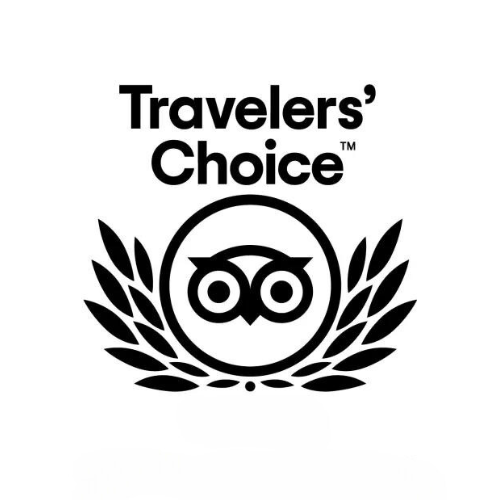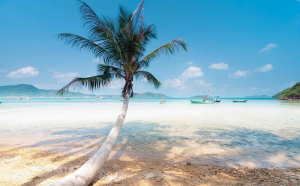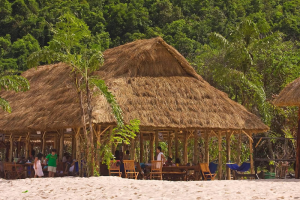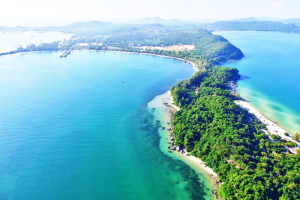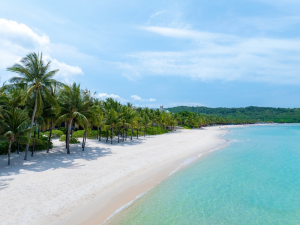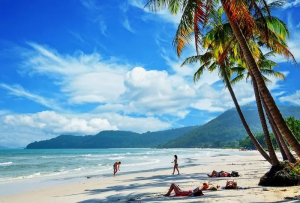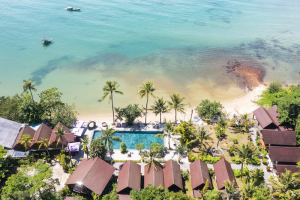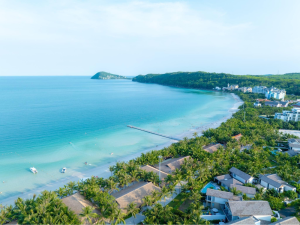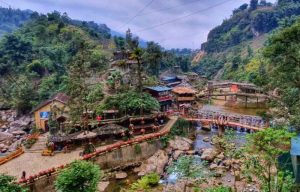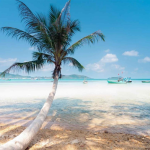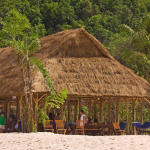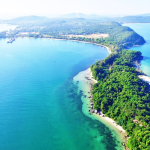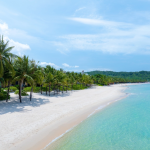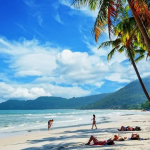
Explore the rich culture and history of the Khmer people at the Khmer Museum. Learn about its exhibits, activities, and nearby attractions in this comprehensive guide.
The Khmer Museum provides a vital platform for the preservation and showcasing of the various faces of Khmer culture, from tradition and belief to art and daily living. Visitors can enter this place and learn about the history of the Khmer step by step, and much better appreciate the contribution this community has made to the region. A visit to the museum is something special; this is the best way to be in touch with the past, which can also explain the present.
What is the Khmer Museum? An Introduction

Below are some essential information about the Khmer Museum that you need to know clearly:
History and development
The Khmer Museum in Soc Trang also goes by the name of Khmer Cultural Museum and was built in 1938; its architecture is a replica of traditional Khmer temples in the province. It was previously known as Samacum Hall, where Khmer monks in the Mekong Delta would meet to discuss different topics.
This museum served as an educational center during the French colonization. It provided a training facility along with both French, Vietnamese, and Khmer language tutorials. However, this Khmer language education became prohibited under the South Vietnamese government during the American occupation. It was only in 1992 that this place was restored into a cultural center and upgraded into the Khmer Museum of Soc Trang, showcasing a variety of cultural heritage in all its dimensions for the ethnic communities of this region.
Architectural features
The museum has two highlights: a typical Khmer architecture of the temples, the same as in Som Rong and Sa Lon pagodas, and a grand collection of Khmer cultural items. The museum compound is a number of peaked roofs curved upwards and comprises two major parts: the Masacum Hall which is used as an exhibition hall and an administrative office. It measures 2,344 square meters in area with the pinnacle of the museum, a 368-square-meter exhibition hall.
Artifact collection
There’s an enormous exhibition in the museum comprising more than 13,000 artifacts depicting the lifestyle and cultural tradition of the Khmer people living in Soc Trang Province. The Khmer history represents different kinds of objects: utensils and implements for farming and textile manufacturing; clothes; various musical instruments; and models of buildings and construction. Some pieces are allowed even to be slightly touched, meaning visitors can not only observe elements of Khmer cultural heritage existing in southern parts of Vietnam.
How to reach the museum
In central Soc Trang City, the Khmer Museum is found on Ton Duc Thang Street, which is only some distance away from Kh’leang Pagoda and Buu Son Tu. In this regard, downtown accommodations require tourists to get onto Hai Ba Trung Street, pass April 30 Park, and cross Quay Bridge. The museum should be visible from the left side after about 450 meters.
The museum is well-connected by roads, and thus, many seasoned travelers prefer to come on a motorbike or self-driving car. These options give them the flexibility to explore nearby eateries and other cultural attractions in the city.
What to see at the Khmer Museum?

It is intended that the Khmer Museum shall cover the whole field of Khmer culture, including sections illustrating national costume and textile arts, with explanations of motives and symbolisms interwoven into all Khmer fabrics, as well as sections showing specimens of traditional craftsmanship, like the skillful hands of the Khmer artisans. These are usually displays of traditional craftsmanship with examples of pottery, weaving, and other handmade items.
The religious collections usually include statues of Buddha and other gods, indicating the strong spiritual traditions among the Khmer people. Besides, the Khmer Museum may reflect daily life aspects, like tools, agricultural implements, and household items that give a view into day-to-day living in Khmer communities. These are further complemented by photographs and historical documents that add even more to the understanding of the visitor about Khmer history and culture. The many exhibits that comprise the Khmer Museum give a broad overview of the rich, multifaceted Khmer heritage.
Activities and experiences at the Khmer Museum

The museum visit will not be limited to observing artifacts but an opportunity for immersive learning and cultural engagement. The museum may offer a guided tour, you should contact the museum or your travel agency for more information. Such cultural performances or even workshops can be organized in the Khmer Museum for first-hand experience with Khmer traditions. These would include traditional music and dance, art crafting techniques, and lectures on Khmer customs and beliefs.
Visitors can also join museum staff and local experts to help with detailed exhibits in Khmer culture and ask questions. The time spent talking to such individuals enriches the visit and provides an individualistic view of most of the exhibits present in the museum. Photo and note-taking, where allowed, of the experience is an amazing way to jot down memories for future reference and further learning from this museum.
Best time to visit the Khmer Museum

The beauty of the Khmer Museum is that it is so engrossing any time of the year. Being an indoor cultural facility, it is cool and enriching to explore whatever the weather conditions are outside. Be it the dry or wet season, the museum presents the same consistent and enlightening experience when visited. You will not have to worry about extreme heat or sudden rain affecting your visit in any way.
In this respect, the Khmer Museum acts as a great all-season destination for tourists, providing relief from the outdoors and an opportunity to study the aspects of Khmer culture in comfort and at your own pace. Of course, it’s always a good idea to check the local weather forecast to inform your travel plans in the broader region, but your visit to the museum itself will be enjoyable no matter the season.
Nearby attractions to explore after the Khmer Museum

Having soaked in the cultural treasure that is the Khmer Museum, let’s have a glimpse of its vicinity where lie some interesting sights. View the serene Khleang Pagoda standing elegantly alongside the Mekong River. Admire the carvings and color of Bat Pagoda, one of the better-known pagodas in Soc Trang. Visit the Nga Nam Floating Market, which is one of the most dynamic markets, full of life and the trade of goods. For nature lovers, My Phuoc Island offers a chance to get out of the city and into the serene beauty of the Mekong Delta.
These are only some of the many attractions in the region, and hidden treasures can be found with a little research in which you can have a balanced travel experience, combining cultural exposure with the beauty of nature.
Read more: Hue Imperial City: A journey through Vietnam’s imperial past
FAQs
Is photography allowed inside the Khmer Museum?
Photography policies vary between museums, so it’s best to check with the Khmer Museum directly or look for signage inside the museum. Some museums may restrict photography altogether, while others may allow non-flash photography for personal use.
Are there guided tours available at the Khmer Museum?
Many museums offer guided tours. Inquire at the museum’s information desk or check their website for tour schedules and availability.
What is the admission fee for the Khmer Museum?
Admission fees can vary. Check the Khmer Museum‘s official website or contact them directly for the latest information on ticket prices.
Are there dining options near the Khmer Museum?
The availability of dining options depends on the museum’s location. Researching nearby restaurants or cafes in advance is recommended.
What other cultural attractions are there in the area besides the Khmer Museum?
Researching the local area for other museums, historical sites, or cultural centers will help you discover additional places of interest to enhance your travel experience.
The Khmer Museum will surely promise an enriching experience for any visitor who aims to seek a glimpse into the Khmer tapestry of variegated hue. Here lies the possibility to enjoy a vast collection of artifacts and exhibits, immersive activities, and the opportunity to explore nearby attractions. All mingling together in a peek at the history, traditions, and artistic expressions of the Khmer people. Whether you are a seasoned traveler, history buff, or mere ethnography enthusiast, the visit to the Khmer Museum ensures furthered appreciation for the richness in heritage this community claims toward the region.
Experience Southeast Asia with Lily’s Travel! A leading tour operator in Vietnam, Lily’s Travel boasts 15 years of experience and over 2,000 five-star TripAdvisor reviews, earning top rankings in Hanoi and Northern Vietnam. They specialize in crafting exceptional tours across Vietnam, Laos, and Cambodia, showcasing not only breathtaking landscapes but also the rich cultural diversity of the region. Lily’s Travel’s commitment to insightful itineraries, outstanding service, and sustainable practices creates truly memorable journeys. Their innovative use of 4.0 technology provides immersive 3D tour previews, allowing you to explore your options with unparalleled clarity. Choose Lily’s Travel for a professional, culturally enriching, and community-minded travel experience. Inquire now and let Lily’s Travel design your perfect Southeast Asian getaway!
Read more: Khai Dinh Tomb: A majestic blend of East and West in Hue

